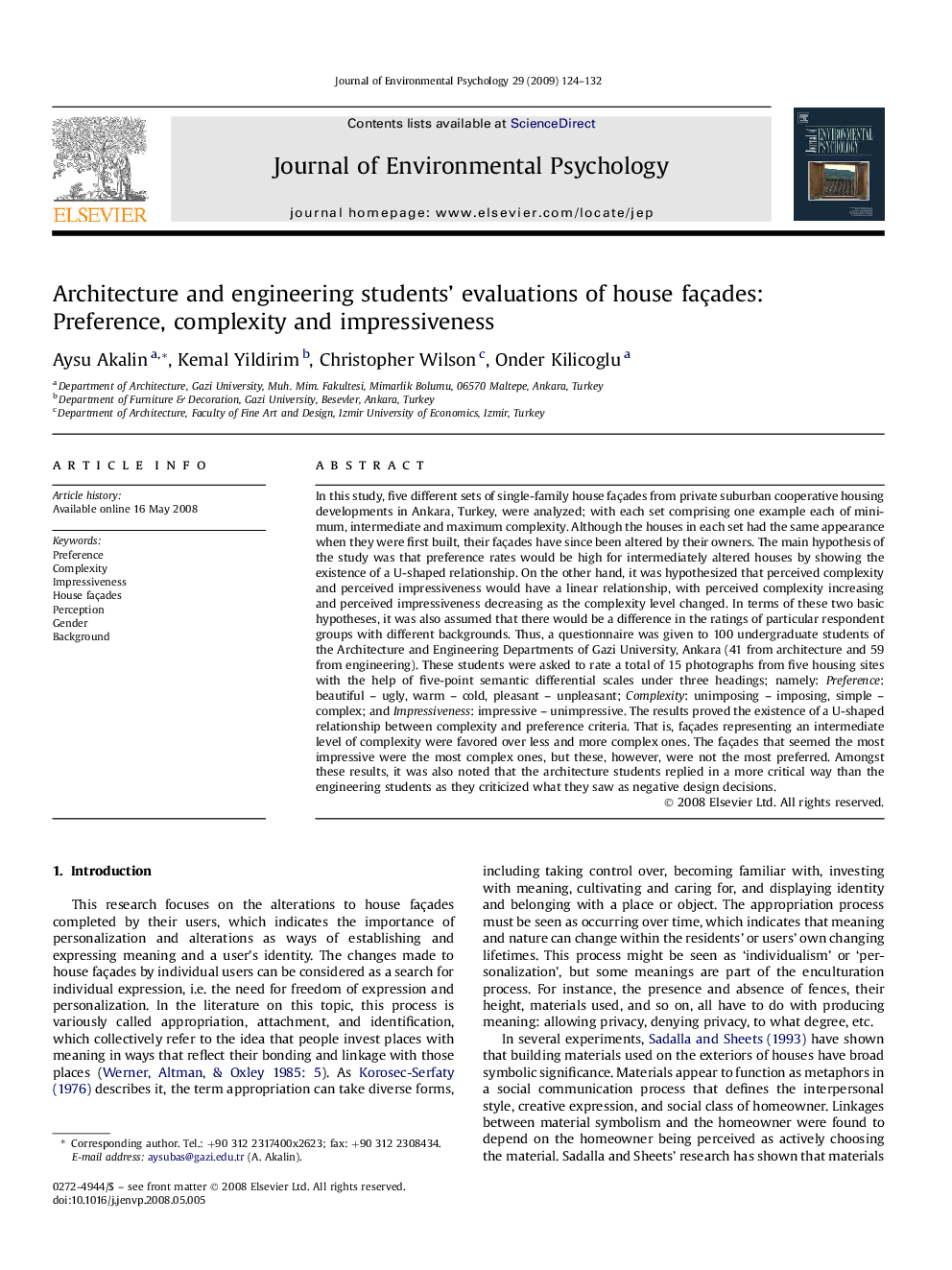| کد مقاله | کد نشریه | سال انتشار | مقاله انگلیسی | نسخه تمام متن |
|---|---|---|---|---|
| 885836 | 912848 | 2009 | 9 صفحه PDF | دانلود رایگان |

In this study, five different sets of single-family house façades from private suburban cooperative housing developments in Ankara, Turkey, were analyzed; with each set comprising one example each of minimum, intermediate and maximum complexity. Although the houses in each set had the same appearance when they were first built, their façades have since been altered by their owners. The main hypothesis of the study was that preference rates would be high for intermediately altered houses by showing the existence of a U-shaped relationship. On the other hand, it was hypothesized that perceived complexity and perceived impressiveness would have a linear relationship, with perceived complexity increasing and perceived impressiveness decreasing as the complexity level changed. In terms of these two basic hypotheses, it was also assumed that there would be a difference in the ratings of particular respondent groups with different backgrounds. Thus, a questionnaire was given to 100 undergraduate students of the Architecture and Engineering Departments of Gazi University, Ankara (41 from architecture and 59 from engineering). These students were asked to rate a total of 15 photographs from five housing sites with the help of five-point semantic differential scales under three headings; namely: Preference: beautiful – ugly, warm – cold, pleasant – unpleasant; Complexity: unimposing – imposing, simple – complex; and Impressiveness: impressive – unimpressive. The results proved the existence of a U-shaped relationship between complexity and preference criteria. That is, façades representing an intermediate level of complexity were favored over less and more complex ones. The façades that seemed the most impressive were the most complex ones, but these, however, were not the most preferred. Amongst these results, it was also noted that the architecture students replied in a more critical way than the engineering students as they criticized what they saw as negative design decisions.
Journal: Journal of Environmental Psychology - Volume 29, Issue 1, March 2009, Pages 124–132